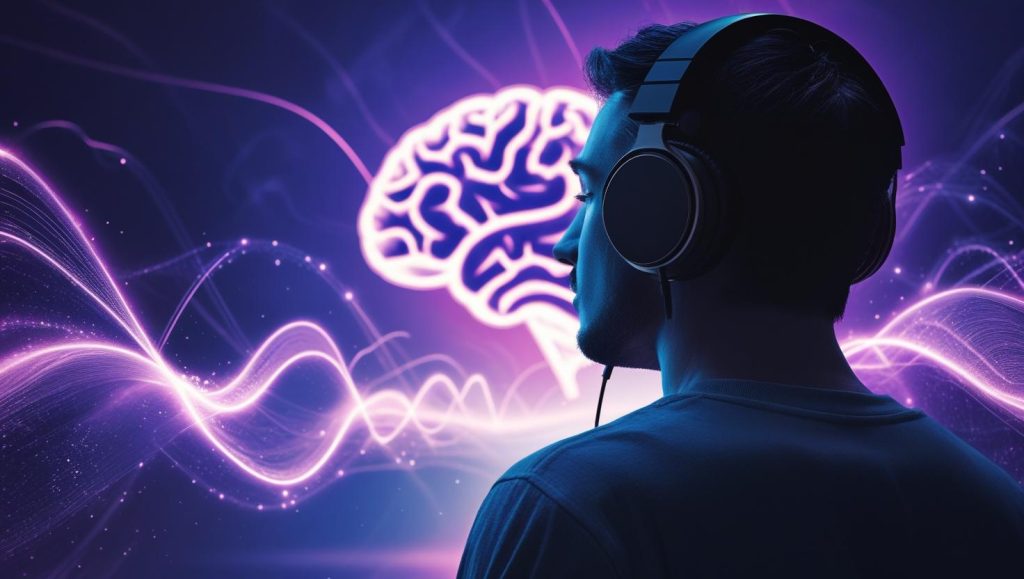In a world drowning in distractions, sometimes the most powerful productivity tool isn’t another app or calendar—it’s the right sound. That’s where Brain.fm enters the picture: not as a playlist, but as a piece of neurotechnology. It doesn’t just set the mood. It shifts your mental state.
While countless platforms offer lo-fi beats or ambient soundtracks, Brain.fm is unique. It uses AI-generated music to directly stimulate your brainwaves—tuning your focus, calming your mind, or easing you into sleep. For professionals battling digital fatigue or struggling to get into flow, it’s like flipping a neural switch.
What makes it different from lo-fi, ambient, or Spotify playlists?
Most audio tools are passive—they entertain or relax, but don’t deliberately shape cognition. Brain.fm is built from the ground up to influence the way your brain fires. At its core is a phenomenon called neural phase-locking: using rhythmic audio pulses embedded below the music to guide neurons into specific frequencies.
In simple terms: it gets your brain in sync with the type of mental energy you need.
- Beta waves (12–30 Hz) – sharpen attention and task performance
- Alpha waves (8–12 Hz) – induce calm and reduce stress
- Theta waves (4–7 Hz) – promote creativity, meditation, and light sleep
“Traditional music activates emotions and memories. Brain.fm is designed to activate specific brain networks,” explains co-founder and neuroscientist Adam Hewett. Peer-reviewed studies back this up—users show improved sustained attention and faster cognitive recovery.
This functionality positions Brain.fm as a natural complement to other focus-enhancing tools like RescueTime and Motion, allowing users to not only schedule and track focus—but enter it on demand.
What it feels like to use Brain.fm
The first time you launch Brain.fm, you choose a mode: Focus, Relax, Sleep, or Meditate. You select how long you want to stay in that state—15, 30, 60, or 120 minutes—and hit play. Within 5–10 minutes, a shift begins. Your internal chatter fades. Distractions feel less magnetic. You’re not hyped up. You’re immersed.
In Focus mode, the music is rhythmic but spacious—no lyrics, no sharp changes. Unlike typical playlists, sessions are AI-generated in real time and never repeat, which prevents habituation (the drop in effect that happens when your brain gets used to background sounds).
“It’s like my brain exhales,” says UX writer and ADHD coach Leona Fox. “Suddenly, I’m just doing the work. I’m not trying to get into the zone—I’m already there.”
Use cases beyond productivity
Though marketed primarily as a tool for deep work, Brain.fm supports several modes that align with broader cognitive recovery goals:
- Relax mode for easing anxiety before a meeting or presentation
- Sleep mode for naps or winding down at night
- Meditate mode for mindfulness, breathwork, or post-lunch resets
Many high performers use it as a “cognitive bookend”—Focus mode in the morning, Sleep mode at night. This creates smoother transitions between high-stimulation and low-stimulation states, which is essential for avoiding burnout. As explored in our peak mental performance pillar, rhythm and recovery are just as vital as hustle.
Who it’s built for
Brain.fm is especially useful for:
- Remote workers who struggle with motivation or screen fatigue
- Entrepreneurs and creators who need flow states on command
- Students prepping for exams who need memory retention
- People with ADHD looking for non-pharmaceutical focus support
- Anyone tired of playlists that stop working after a week
Dr. Sara Rogers, a cognitive performance expert, describes it this way: “This isn’t productivity theater. It’s neuro-alignment.”
Interface, features, and user experience
Brain.fm’s UI is minimal and intuitive. You can choose:
- Session duration (15 to 120 minutes)
- Sound environments like cinematic, forest, space, or groove
- Optional fade-outs and break nudges for longer sessions
There’s a desktop web app and a mobile app—both support offline listening for flights or digital detoxes. Premium users also get access to a basic productivity planner, which helps establish regular rhythms around work blocks and rest windows.
What could be improved
- Limited musical customization: You can pick general environments, but can’t fine-tune instruments, tempo, or genre.
- No direct task integration: Would be great to sync sessions with tools like Notion or Pomodoro timers.
- Subscription cost: At ~$6.99/month, it may deter casual users—though most report the cost pays off quickly in focus gains.
Still, compared to the time and mental clarity lost during even one distracted afternoon, the ROI is clear. And annual plans lower the monthly cost even further.
Final verdict: engineered for your brain, not your playlist
Brain.fm doesn’t exist to entertain. It’s here to optimize. It doesn’t distract. It dissolves distraction. And in a world where noise is constant, that’s rare and valuable.
Whether you’re deep in a sprint, winding down after meetings, or trying to recover faster from stress, Brain.fm delivers the missing piece: environmental neuro-support. It’s not about pushing harder—it’s about flowing better.
Paired with tracking tools like RescueTime or scheduling platforms like Motion, Brain.fm becomes the soundscape of your focus stack—quietly turning intention into output.
Focus, by design. Calm, by command. That’s the promise—and the power—of Brain.fm.



